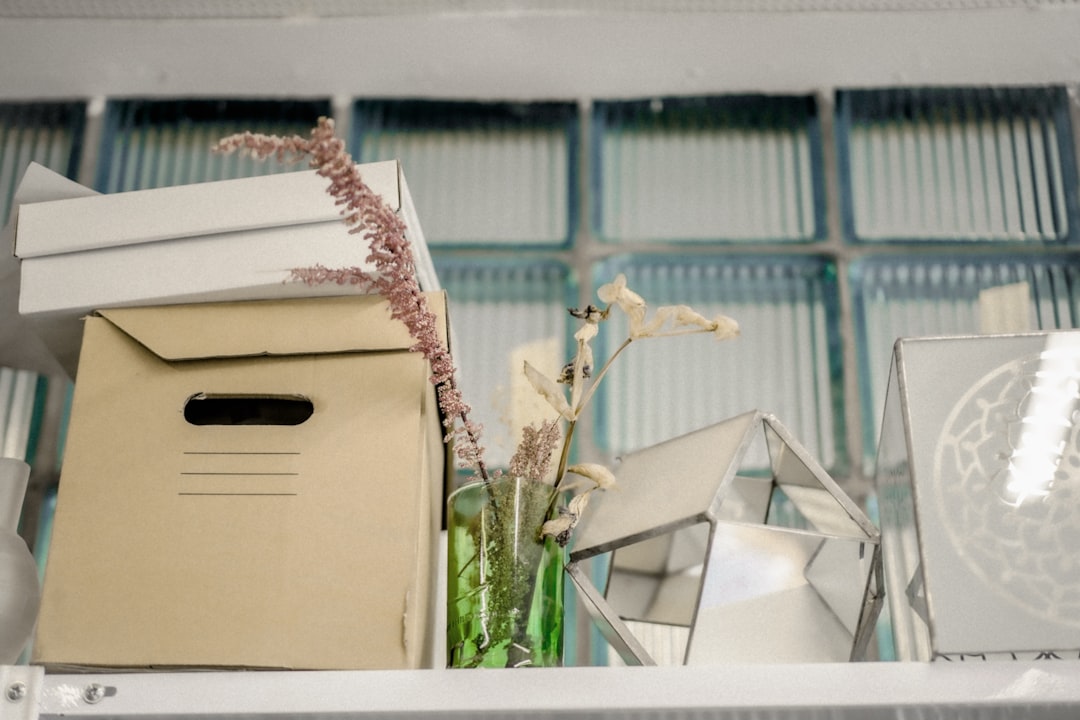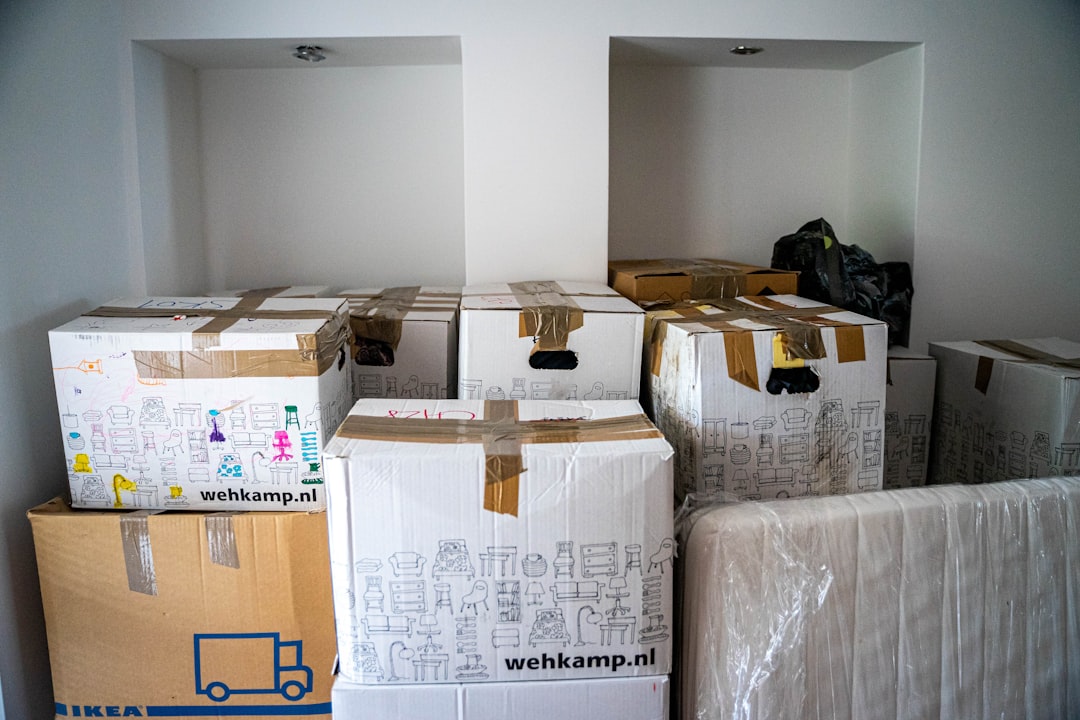How to pack books when moving to new home
Packing books might seem easy, but doing it the right way can save your back, your boxes, and your beloved collection. Books are one of the heaviest and trickiest items to transport. Whether you're moving across town or relocating long-distance, using a professional moving van service means prepping your boxes properly will help make loading and unloading quicker and safer.
Key Takeaways: Packing Books for a Move
- Sort Before You Pack: Save time, money, and effort by decluttering your book collection first. Donate or give away books you no longer need to lighten your load significantly.
- Master the Right Packing Method: The way you place books in a box is crucial to prevent damage.
- Upright: Pack most books standing upright, with the spine against the side of the box, as if on a shelf.
- Flat: Stack oversized books like albums or coffee table books flat, with the largest at the bottom.
- Never pack books with the spine facing up, as this will warp the pages and damage the binding.
- Protect Valuable Editions: Give special care to valuable or sentimental books by wrapping them in acid-free paper, placing stiff cardboard between them, and lining the box with extra padding like bubble wrap.
- Fill All Gaps: Use wadded-up paper or bubble cushioning to fill any empty spaces in the box. This prevents books from shifting during transit, which can cause bent corners and scuffed covers.
- Label Everything: Clearly mark every box with "BOOKS" and the destination room (e.g., "Office," "Bedroom"). This ensures movers handle them with care and place them in the correct spot for easier unpacking.
Essential Packing Supplies Checklist
To pack your books safely, ensure you have the right materials on hand. Here is a refined checklist of must-have supplies:
- Use Small, Sturdy Boxes: This is the most important rule. A large box filled with books becomes dangerously heavy and is prone to breaking. Small boxes remain manageable and protect both your back and your books.
- Protect Special Books with Acid-Free Paper: For valuable, antique, or sentimental volumes, wrap them in acid-free tissue to prevent yellowing and long-term damage.
- Utilise Fillers to Prevent Shifting: Secure your books by filling all empty spaces in the box. Bubble cushioning roll, packing paper, or even crumpled newspaper are perfect for preventing movement and absorbing shock.
- Keep Tape and Markers Ready: You will need plenty of strong packing tape to securely seal the bottom and top of every box. A bold black marker is essential for clear, easy-to-read labels.
5 steps on how to pack your books perfectly.
Before you pack a single book, the first crucial step is to carefully go through your collection and decide what you truly want to keep and pay to move. This is especially important if you’re moving long-distance and are being charged by weight.
Step 1: Sort and Downsize Your Collection
Books are deceptively heavy; even paperbacks add significant weight and cost to your move. Many of us accumulate a lot over a short time, so be honest with yourself. Keep the books you read again and again, special gifts, and those you genuinely plan to read. For the rest old textbooks, duplicates, or reads you didn't enjoy find them a good home. Donating them to charities or used bookstores ensures someone else will get as much joy from reading them as you did. Remember, the fewer books you move, the more time, energy, and money you save.
Step 2: Choose and Prepare the Right Boxes
Once you’ve decided which books are coming with you, selecting the right box is critical. Always choose a small or medium-sized box. While it may be tempting to use a large box to fit more, it will quickly become too heavy to lift safely, risking injury to you and damage to your books.
Inspect any used boxes to ensure they are clean, sturdy, and free from dampness, which can ruin paper. If you buy new boxes, you will need to assemble them. Whether new or used, preparing the box properly is key. Make sure you seal the bottom well by doubling the amount of packing tape. A strong base is essential to prevent the bottom from giving way under the weight of the books. You will also need a quality marker for labeling.
Step 3: Use the Correct Packing Techniques for Hardcovers and Paperbacks
How you place the books inside the box directly impacts their condition upon arrival. There are a few correct methods, and you can use a combination of them in a single box.
- Upright Method: This is ideal for most hardcover editions. Place them in the box standing upright with the spine against the box’s side, just like you were putting them on a shelf. This protects the book's structure. Ensure they are packed snugly but not too tightly, as this can make them difficult to remove and cause damage.
- Flat Stacking Method: Hardcovers and paperbacks can also be packed flat and stacked. Place the largest books at the bottom and stack smaller ones on top. This is particularly effective for oversized books like photo albums and coffee table books.
- Spine First Method: Both book types can be packed with the spine down and the paper edges facing up.
Crucially, to prevent damage, never pack books with the paper edges facing down and the spines up. This position will cause the pages to bend and the spines to warp. Avoid packing books at odd angles, as this can cause them to shift and get damaged during the move.
Step 4: Provide Extra Protection for Valuable Books
Special books require special care. If you have books of great value, such as old photo albums, first editions, or leather-bound copies, take these extra protective measures.
- Wrap Each Book: If the hardcover editions are of moderate value, wrap each one in packing paper before placing it in the box. For high-value or sentimental books, use acid-free paper. Unlike regular packing paper, acid-free paper won’t deteriorate or turn yellow over time, preserving your books, especially if they need to be stored.
- Add Internal Support: For very valuable editions, place stiff cardboard in between each book to keep the spines straight and prevent any movement or friction between covers.
- Pad the Box: Before you pack a single book, line the box with a protective layer. Bubble wrap or extra packing paper balled up can be used to create a well-padded base and surround for your most cherished books.
Step 5: Secure, Fill Gaps, and Label Clearly
The final step is to ensure each box is ready for transit. Books can shift easily during a move, so use wadded-up paper, bubble cushioning roll, or even linens to fill any remaining spaces inside the box. A tightly packed box prevents books from sliding and hitting one another, which can cause bent corners and scuffed covers.
Once filled, secure the top of the box with packing tape, just as you did the bottom. Finally, label each box clearly. Write "BOOKS" on the top and sides, and consider adding the room it should go into at your new home (e.g., "BOOKS - OFFICE"). This will ensure movers place them in the correct location and handle them with care.
Most Recent Posts
Related posts
Discover more:
Ready to Move? Book your man and van today!
Don't let finding a man and van stress you out. Compare quotes from our network of trusted movers, read real reviews, and book with ease. Save time, save money, and move with confidence.
- Quickly compare movers
- Read verified reviews
- Book online with confidence









